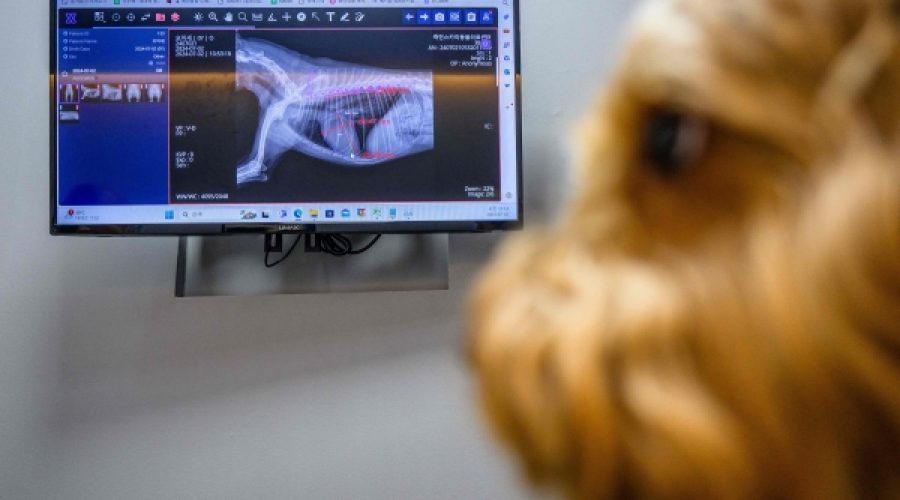Revolutionizing Pet Care: How South Korea’s AI Innovations Can Transform Your Business Strategy
Innovative AI Usage Enhances Veterinary Diagnostics in South Korea
By Hieun Shin
When Mozzi, a five-year-old goldendoodle, began walking "unnaturally," his concerned owner took him to a veterinary clinic in South Korea. There, a diagnosis was made not by a human, but through the use of artificial intelligence.
South Korea, a leading global producer of chips that power generative AI, is rapidly adopting innovative applications of this technology. One such application, named X Caliber, assists veterinarians in identifying X-ray abnormalities within seconds, streamlining the diagnostic process significantly.
X Caliber analyzed Mozzi’s X-rays and revealed a 22% probability of knee dislocation. Although his condition was not critical, it required careful management to prevent surgery. Mozzi’s owner, Mo Jae-hyun, expressed appreciation for the AI program, stating, "I wouldn’t have understood the results if I didn’t look at the numbers. Of course, I trust my vet, but seeing the results myself seems more credible."
Developed by South Korean telecom giant SK Telecom, X Caliber boasts a disease detection rate of up to 86%, which veterinarians say has transformed their diagnostic abilities. Oh I-se, CEO of Sky Animal Medical Group, explained that for conditions like heart disease, the software can now reveal results in just 15 seconds, a vast improvement over the traditional method of measuring vertebral heart size manually.
Joo Ye-seul, manager of SK Telecom’s global team, described X Caliber as "the beginning of AI healthcare," with plans for further expansion into additional areas. The service is currently accessible in the United States, Australia, and select Southeast Asian countries. In Indonesia, veterinary hospital owner Kristanya Oen noted that X Caliber assists in addressing a shortage of trained radiologists, facilitating better diagnostics.
SK Telecom is affiliated with SK Hynix, the creator of the first high-bandwidth memory chips that enable faster processing for complex AI tasks. Despite some skepticism about the return on investment in AI, CEO Chey Tae-won remains committed to future innovations. Earlier this month, he urged employees to focus on next-generation products and announced an ambitious plan to invest 80 trillion won ($60 billion) in AI chips, services, and data centers.
In South Korea, where many people are choosing pet ownership over parenthood, the rise of AI in veterinary care is not unexpected. Official statistics reveal that pet ownership has nearly doubled over the past decade, with one in four households now including at least one pet. Notably, last year, more strollers were sold for pets than for babies on the e-commerce platform Gmarket.
The pet care industry was valued at approximately eight trillion won ($6 billion) in 2022, a significant increase compared to five years ago. The government aims to double this industry’s value by 2027, offering various loans and tax incentives to support pet food and healthcare businesses.
In response to this growing market, South Korean companies are exploring new AI applications in pet care, including smart toilets for early disease detection and smart leashes that monitor pets’ vital signs. Kim Soo-kyung, a senior manager at KPMG Korea’s Economic Research Institute, noted, "Devices that can monitor mild to severe diseases in pets’ daily lives are expected to expand."
Special Analysis by Omanet | Navigate Oman’s Market
The rise of AI in veterinary diagnostics, as showcased by South Korea’s X Caliber software, presents significant opportunities for businesses in Oman to enhance healthcare services across multiple sectors, especially as pet ownership increases. This trend could lead to a growing demand for tech-enabled solutions, urging entrepreneurs to consider investing in AI-driven health technologies and related services. However, they must also be cautious of the rapid technological advancements that may outpace current market readiness, necessitating strategic partnerships and ongoing training to maintain competitive edge.



